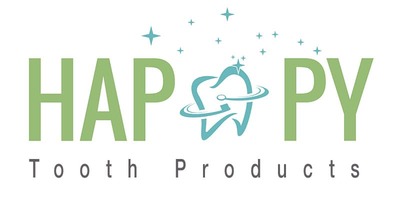Did you know that February is National Children’s Dental Health Month? In recognition of this month of awareness we are discussing warning labels on children’s toothpastes so check it out below.

Have you ever taken a look at the back of most children’s toothpastes’ packaging? If not, you will find this in bold print:
“WARNING–Keep out of reach of children under 6 years of age.”
You are specifically warned to keep this product out of the reach of children under the age of 6, however the American Dental Association recommends that you start brushing your child’s teeth as soon as the first tooth is in place-around 8-14 months of age. So, what are you to do? Heed the product warning or use it on your kids?
Children’s toothpastes carry this warning because of the active ingredient, sodium fluoride. In large quantities, if swallowed, fluoride can act as a poison in the body causing neurological and endocrine problems.
Obviously one reason for the warning to keep toothpastes away from children under the age of 6 is because you don’t want them to grab a tube and ingest it. However there is just as much risk of ingesting fluoride if a young child should swallow any toothpaste during or after brushing. Even without swallowing, fluoride can be absorbed into the body as the mouth has an absorption efficiency rate of over 90% with it just being in the mouth!*
Let’s look at it a bit closer. How much fluoride could be ingested upon swallowing toothpaste? Looking at data from the Journal of Public Health Dentistry,
“…two-to-three year old children ingest an average of 0.3 grams of toothpaste per brushing, which equates to 0.3 to 0.45 mg of fluoride. At two brushings per day, the average two-to-three year old would ingest between 0.6 and 0.9 mg of fluoride from toothpaste each day. Some children who brush twice a day will swallow far more than this. Research has found, for example, that 10% of children swallow more than double the ‘average’ amount. Among these children, fluoride ingestion from toothpaste will range up to 2 mg per day. To put these doses in perspective, the Institute of Medicine recommends that two-to-three year old children ingest 0.7 mg of fluoride per day from ALL sources, and that the ‘upper tolerable intake’ is 1.3 mg/day. Many children will ingest more fluoride from toothpaste alone than is recommended as a total daily ingestion, and some will even ingest more than is deemed ‘tolerable.” *
As noted above, children (and adults) are exposed to a variety of sources of fluoride in addition to toothpaste, such as fluorinated drinking water, fluoride supplements, and naturally occurring fluoride in food. This chronic exposure to fluoride can impair bones, the brain, even the thyroid and has been linked to lower IQ levels, neurological problems and endocrine disorders such as hypothyroidism.*
Ingesting a high amount of fluoride toothpaste could cause dental fluorosis, a condition impairing tooth enamel, or symptoms of acute fluoride toxicity. The greatest danger of fluorosis occurring is in children under the age of 8. Fluorosis results in enamel mottle causing yellow or brown stains and pit formation on tooth enamel.*
Advocates still argue the topical effects of fluoride and yet this benefit has also been called into question. A recent study “demonstrated that the supposedly beneficial fluorapatite protective layer formed on teeth from fluoride is only 6 nanometers thick (you would need 10,000 of these layers to equal the width of a strand of hair). The question raised by these results is whether such ultra-thin layer can actually provide enamel protection, considering that simple chewing would disrupt this so-called protective layer.”*
Unfortunately fluoride isn’t the only chemical of concern found in children’s toothpastes. Sodium lauryl sulfate, a known chemical having no value in oral care and possibly causing skin irritation, is also often included among others.
Faced with this warning on children’s toothpastes, what should you use? What products would be better?
HAPPY Tooth Powder and Toothpaste leads the way by promoting a non-fluoride formulation with no warnings. Why risk our children’s health when there are other, natural ingredients that can just as effectively clean teeth, prevent plaque buildup and help remineralize teeth?
Two key ingredients in our tooth powder are xylitol and erythritol. They are a sugar alcohol, unlike regular sugar, that inhibits bacteria growth and therefore helps prevents cavities, and increases the pH and volume of saliva in your kids’ mouths. You can read about all of our ingredients and their role in superior oral care here.
You should not have to choose between effective oral care for kids and the risks of harmful chemicals in an effort to prevent cavities. Our formulation is safe for the whole family and can be used by kids at any age. No warnings are found on our bottles, but you WILL find the EWG VERIFIED stamp of approval on our Tooth Powder, which shows that we avoid using their ingredients of concern, including fluoride.
We, here at Natural Tooth Health, want the best for our children and yours. We will continue to provide recommendations on cavity prevention for kids in the future, but in the mean time be sure to stock up on your favorite HAPPY Tooth Powder or Toothpaste and share it as a family!
